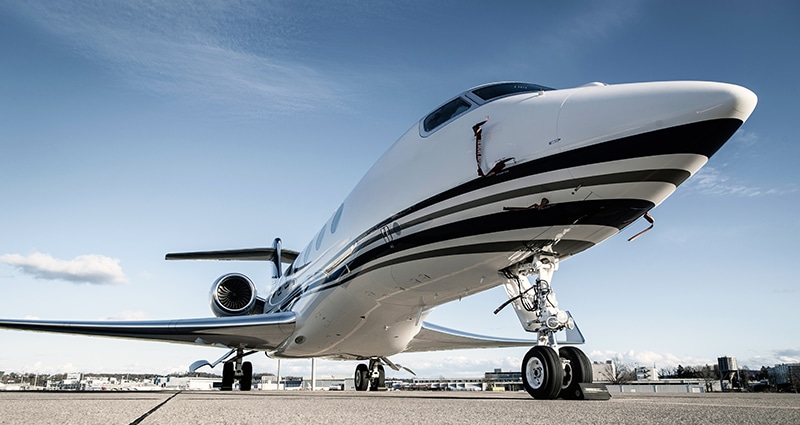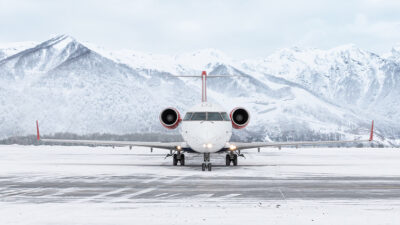What Does Modern Airmanship Mean to You?

I’ve been studying the dynamic of the human-machine interface since 2001, the year I transitioned to my first fully integrated, glass-cockpit airplane. Even then there was a lot of published research, yet nowhere could I find a thought-through, uniform approach that would explain most of the capabilities and challenges of the modern flight deck and an organized approach to developing the kind of performance the most experienced pilots around me were demonstrating already.
For almost 10 years, my “Handbook for Glass Cockpit Airmanship” was a row of loose-leaf binders containing hundreds of research papers from some of the finest human factors and engineering organizations in the world.
Forced to distill the knowledge and expertise of a rapidly expanding field of human performance, I managed (with some help) to find a way to organize the vast amounts of research, results of our field work and observed “industry best practices” into a group of principles that aviators of every stripe could access and identify with. We eventually turned this into our first book, “Automation Airmanship: Nine Principles for Operating Glass Cockpit Aircraft” (McGraw-Hill Professional, 2013).
I have told many pilots and crew that we didn’t set out to write a book. All we really wanted to do was help others succeed faster. But in the end, we wrote the book that in the beginning we could not find.
Defining Airmanship
In the first chapter of my friend and colleague’s seminal book on modern aviation human factors, “Redefining Airmanship,” Tony Kern writes:
“Expert flyers are said to have good hands, judgment, discipline, common sense, and situational awareness, but no one seems to agree with an all-encompassing picture of superior airmanship. Perhaps the inability to put our finger on a precise definition of airmanship illustrates a problem that goes beyond mere semantics. How can we train to become what we cannot define and might not fully understand?”
In the 25 years since the book’s publication, the global aviation fleet has had a nearly 100% turnover in its makeup of primarily “steam-gage” (round-dial) aircraft whose cockpits were manned, in many cases, by a crew that included a dedicated flight engineer. And like many researchers have observed (including myself), no one could have foreseen the complications and unique problems that a smaller crew in a more complex cockpit would create.
Our definition of “Automation Airmanship” has remained unchanged for over 10 years—perhaps a sign that it just may possess the resilience to hold its meaning for another decade. Here it is for your reference:
“Automation Airmanship: the understanding and application of automation to airmanship, to ensure balanced situational and mode awareness and crew workload through the full realm of automation, from no automation to fully coupled, to provide for the safest and most efficient flight.”
When in Doubt, Fly First
I’ve had the opportunity to examine accidents and near-accidents over the span of two decades, specifically when they involve advanced, highly automated aircraft. One theme continues to be present in nearly all of them. Crews that have experienced an undesired aircraft state (UAS)—while managing the flight path through the flight guidance system fully coupled (both speed control and flight guidance engaged)—consistently attempt an unsuccessful first course of action.
They try to manipulate the flight guidance and autoflight to regain control of the aircraft flight path and exit the undesired condition, when the quickest and safest course of action would be to disconnect the autoflight and assume “manual control” of the aircraft flight path.
This continues to be a perilous choice among all possible actions—using autoflight to get out of a situation that poor autoflight use and/or degraded situation and mode awareness got the crew into in the first place. In many cases this over-reliance on automation only deepens the undesirable condition, literally, making things worse.
The 9 Principles of Automation Airmanship, learned, applied and elaborated on over time with experience and insights gained from personal curiosity, research and training, can form a resilient pattern of flight deck discipline. That discipline fundamentally changes how a pilot interacts with their aircraft and crew in the 21st Century. It does, however, require an above-average commitment to breaking with normal routines and what we at Convergent refer to as “the crushing grip of mediocrity.”
To improve constantly over a career, eventually one must break the grip that complacency can have on their airmanship.
Reading this post alone will not make you a better pilot tomorrow. But acting differently inside of the normal routine and flow of activities in your own flight department will make you a better pilot.
 Convergent Performance
Convergent PerformanceConvergent Performance is uniquely dedicated to reducing human error in high risk environments.
http://www.convergentperformance.com/
© 2025 Convergent Performance. All Rights Reserved.
Next ArticleRelated Posts

Mitigating Risk – Amidst the Chaos
There have been more high-profile aviation accidents in the last few months than in the last few decades. As we mourn those we have lost and aim not to make assumptions before final reports are completed, we must focus, personally and professionally, on assessing the risk of something similar happening within our aviation enterprises.

Let’s Get Personal (About Risk)
Aviation loves to talk about risk management. Insurance companies, manufacturers, and organizations all fully embrace the concept and know that to make it work on the line, we must get people at all levels and from all functional areas to embrace it. Tools such as the Flight Risk Assessment Tool (FRAT) are noble attempts, but at the core of it all lies the simple fact that people, as individuals, view risk differently.

